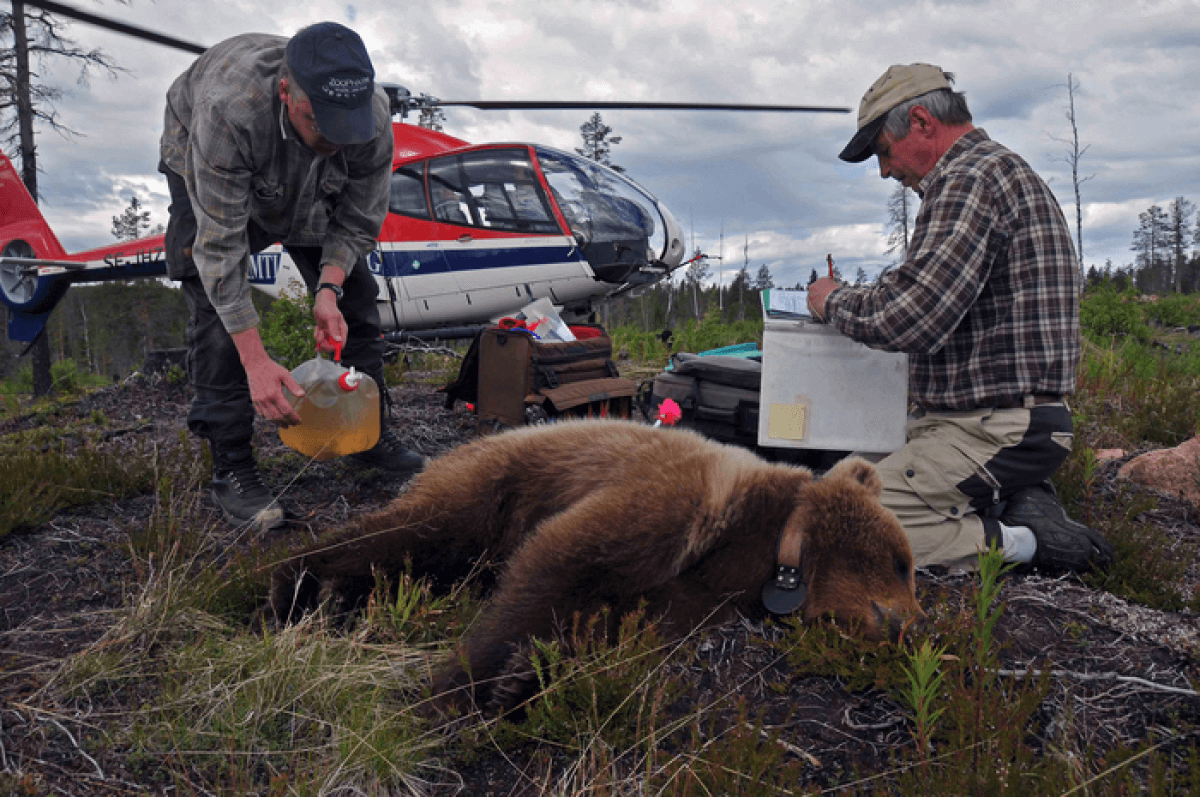AARHUS, Denmark — Blood clots can develop when people are inactive for a long time. However, for bears that hibernate and stay still for months, why doesn’t that happen to them? Researchers from Aarhus University in Denmark think they finally have the answer after using unconventional methods to map their defense against blood clots. It took 13 years, but study authors say there is a protein called HSP47 that typically helps fight inflammatory conditions in the body.
“This protein is the key to a natural mechanism to protect the body against blood clots when it cannot move. This finding is very exciting as it has the potential to be of great importance for people at risk of developing blood clots due to inactivity,” says Professor Ole Frøbert of the Department of Clinical Medicine at Aarhus University, in a media release.
Frøbert and his team have previously shown that the bear’s blood platelets are less prone to sticking together during the winter. To explain why, they took blood samples from wild bears in Sweden and compared the samples in winter and summer.
“By meticulous examination of proteins from blood platelets, we discovered that the protein HSP47 was almost absent in the winter. And when we examined mice in which the gene that produces HSP47 was removed, we saw that the mice were hardly able to form blood clots,” explains Frøbert.

How could this benefit people?
Now, the question is how to apply the understanding of this mechanism to help patients with limited movement, like those who are paralyzed. Currently, there are plenty of drugs on the market today for preventing blood clots, but they all come with the risk of potentially fatal complications like bleeding. This study could make room for some significant breakthroughs in drug development.
“There are many mechanisms that regulate blood coagulation, and we have demonstrated yet another. Since we have succeeded in downregulating HSP47 with gene manipulation in mice, we believe that the new mechanism may open up the development of a new type of gentle, preventive treatment with significantly lower risk of bleeding and other side effects,” the study leader adds.
Looking ahead, new research endeavors involve exploring whether certain patients, such as stroke survivors, may spontaneously activate downregulation of this protein. For these patients, blood-thinning medications wouldn’t be necessary. The team is also continuing to work with bears, as there’s lots left to learn in order to potentially better treat people in the future.
“We are also continuing our research on the bear model, as it may potentially prove to be a Swiss Army knife with solutions to a wide range of major challenges. Currently, we are working to understand why bears – unlike inactive humans – do not lose muscle mass during hibernation,” concludes Frøbert.
The findings are published in the journal Science.

